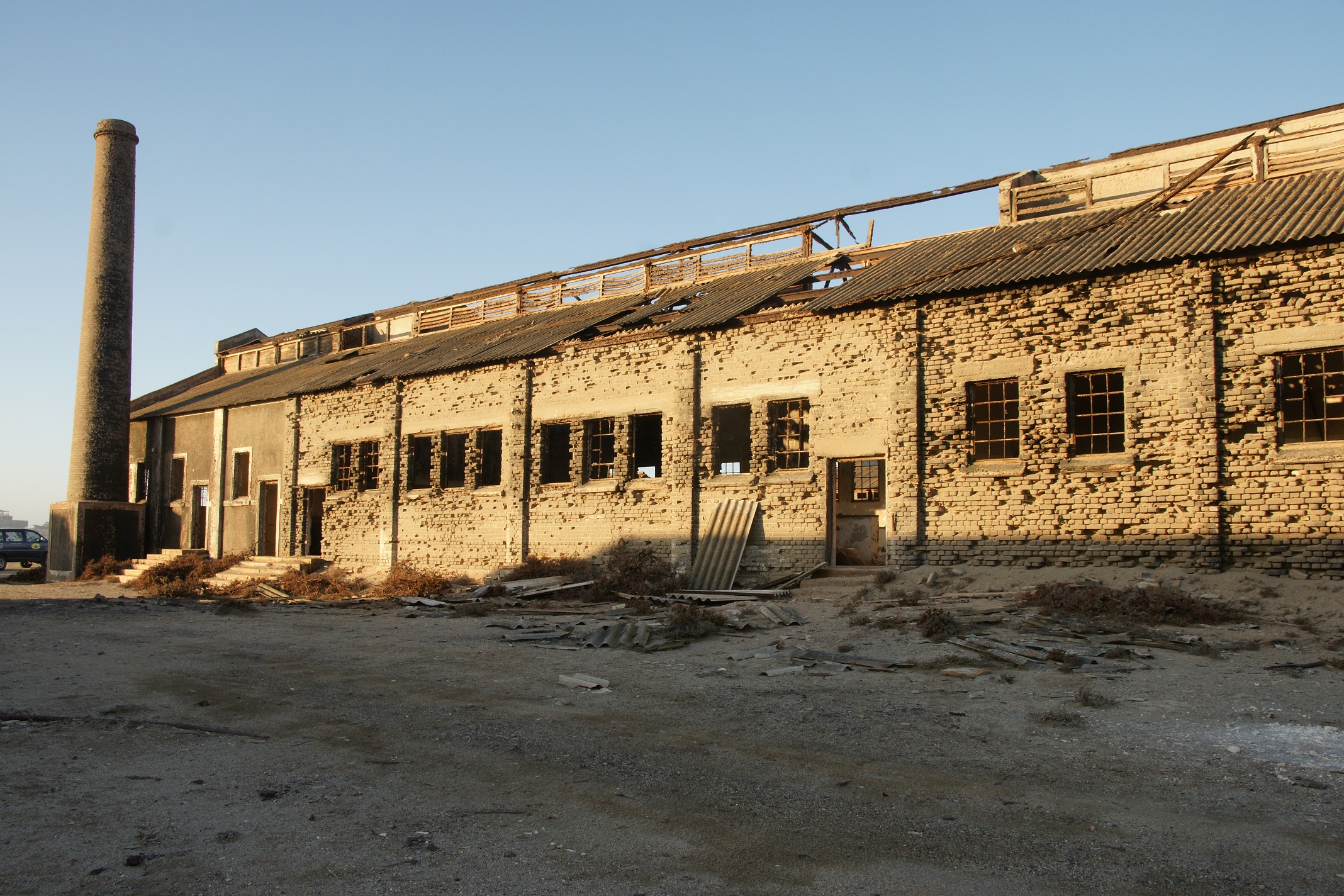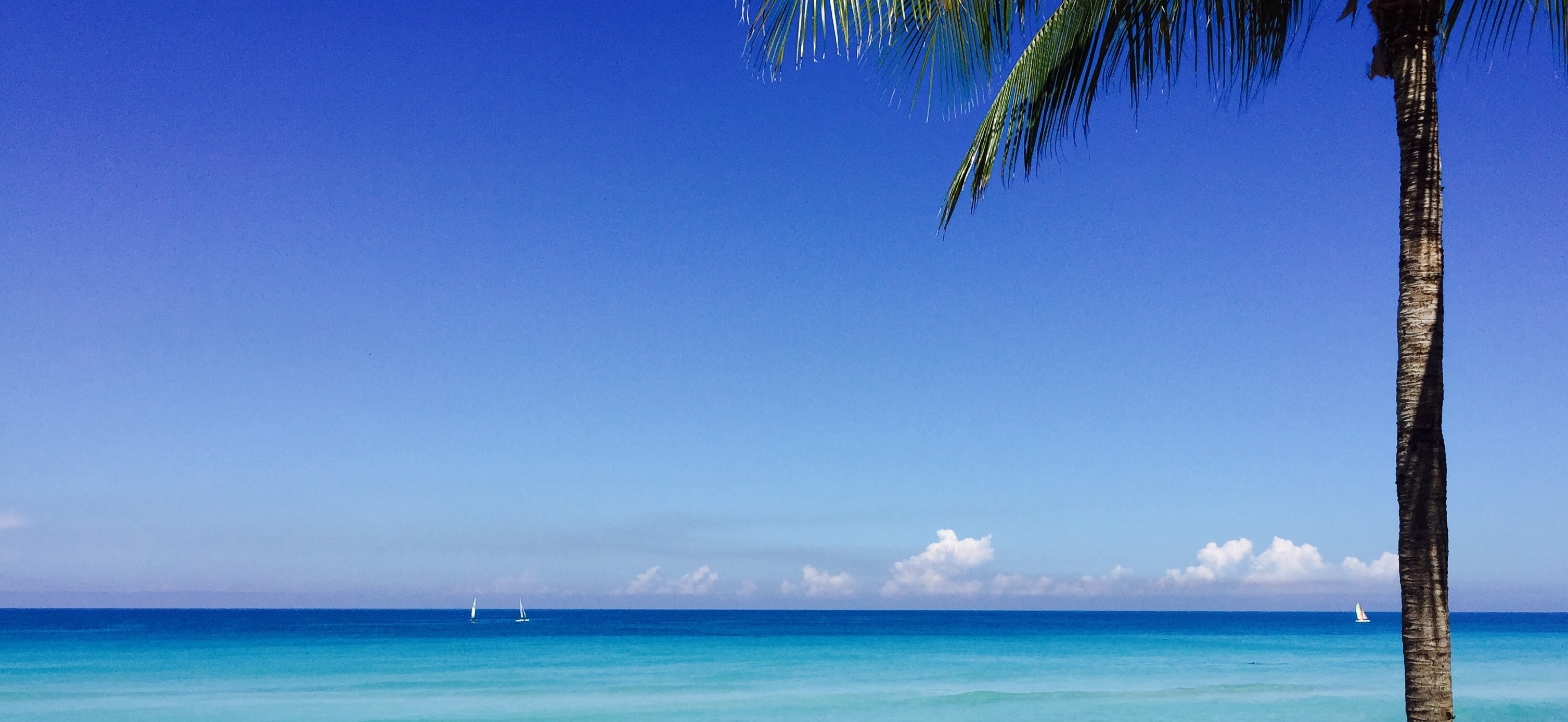One of the places Derek was particular excited to visit in Namibia is the boom-to-bust ghost town, Kolmanskop. Once an exciting little town, home to the glitz and glamour of German diamond miners; today the homes and buildings stand empty and are slowly being reclaimed by the sandy desert.
Derek has been wanting to come here for almost 30 years. In fact, he remembers that moment of first intrigue about this eerie ghost town quite specifically. In 1987 there was a TV series called ‘The Mantis Project’ that used the ghost town as the setting and plot device. Since watching that series he knew he would one day visit the ruins of the forgotten mining town.
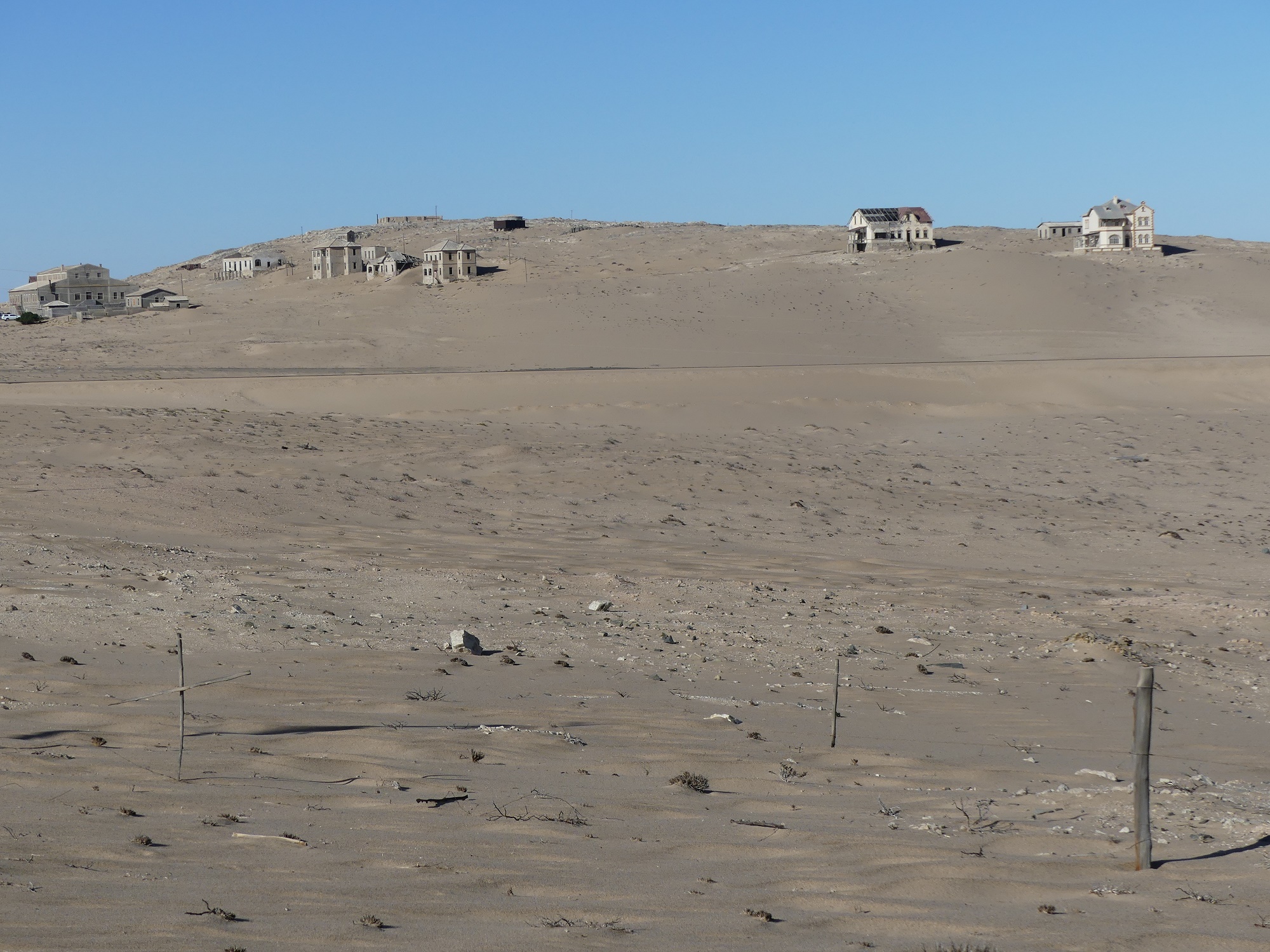
Kolmanskop as seen from the road
At its zenith – in the diamond rush of the early 1900s – Kolmanskop was one of the most prosperous towns in the world. The town had, among other facilities, a large hospital, a bakery, an ice-maker, an opera hall, gymnastic equipment and even a bowling alley. It was apparently a pretty little town in the desert – and completely electrified! It is hard to believe that this comfort and entertainment was available in Africa, in the middle of the desert, 100 years ago.
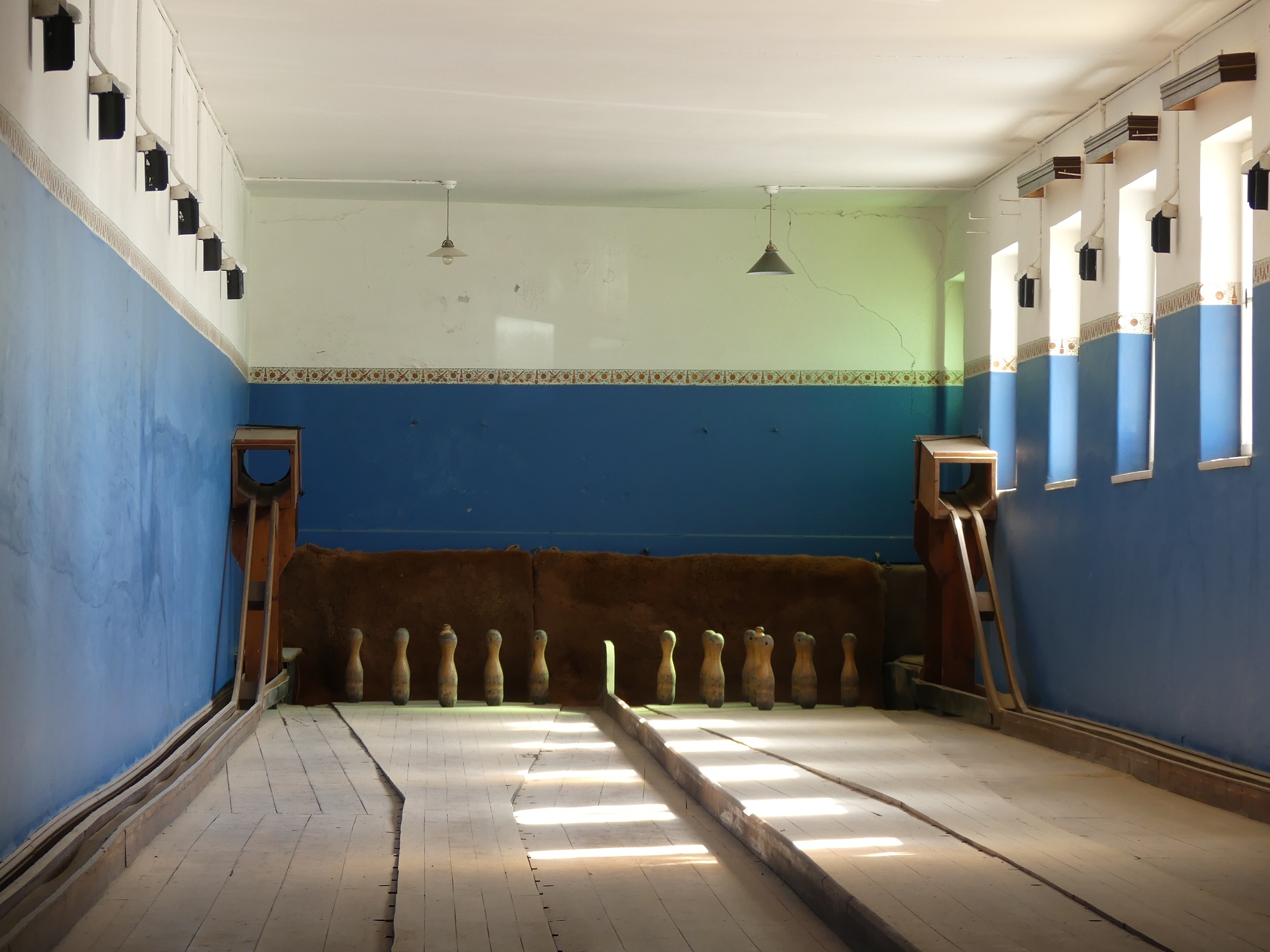
The bowling alley was one of the main entertainment spots
It is also worth noting that the hospital boasted the first X-ray machine of Southern Africa. To care about the workers? Not so much. It was more about scanning workers suspected of having swallowed diamonds.
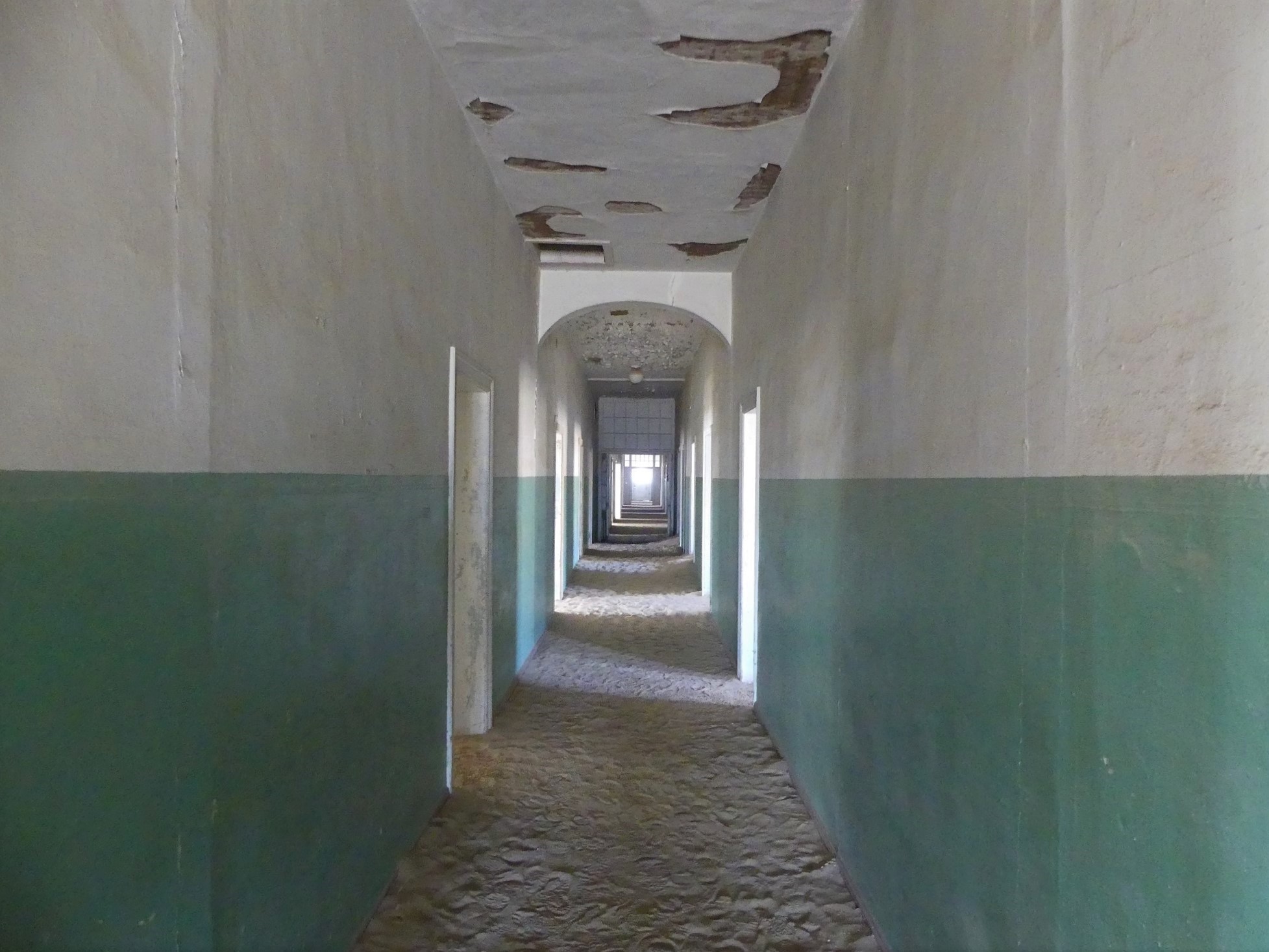
The eerie hallway of the sand-filled hospital
The town also possessed its own wine cellar; which was mainly used for medicinal purposes. One of the two resident doctors believed that patients recovered more speedily if they received some stimulation in the form of a little wine or champagne. My kind of place!!
But its glory was short-lived.
At the peak of the diamond rush in the early 1920s, 300 German adults, 40 children and 800 native Owambo contract workers lived in Kolmanskop. With wars and other interruptions, diamond production started to decline and finally halted in 1954 when the operation was moved to more profitable fields near Oranjemund.
Since that day, it was “last one out, turn off the lights” and the tiny German enclave was left to the hungry desert.
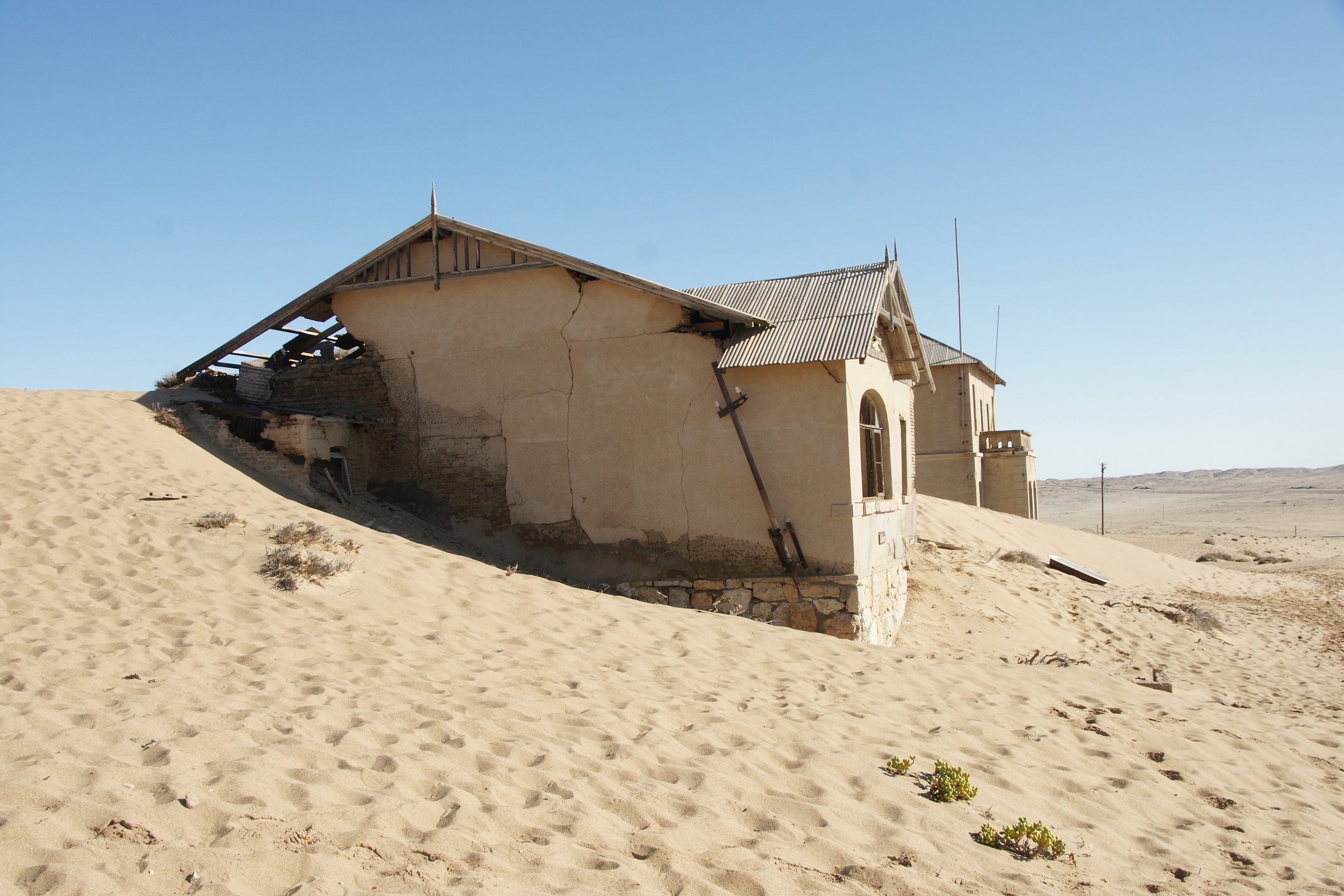
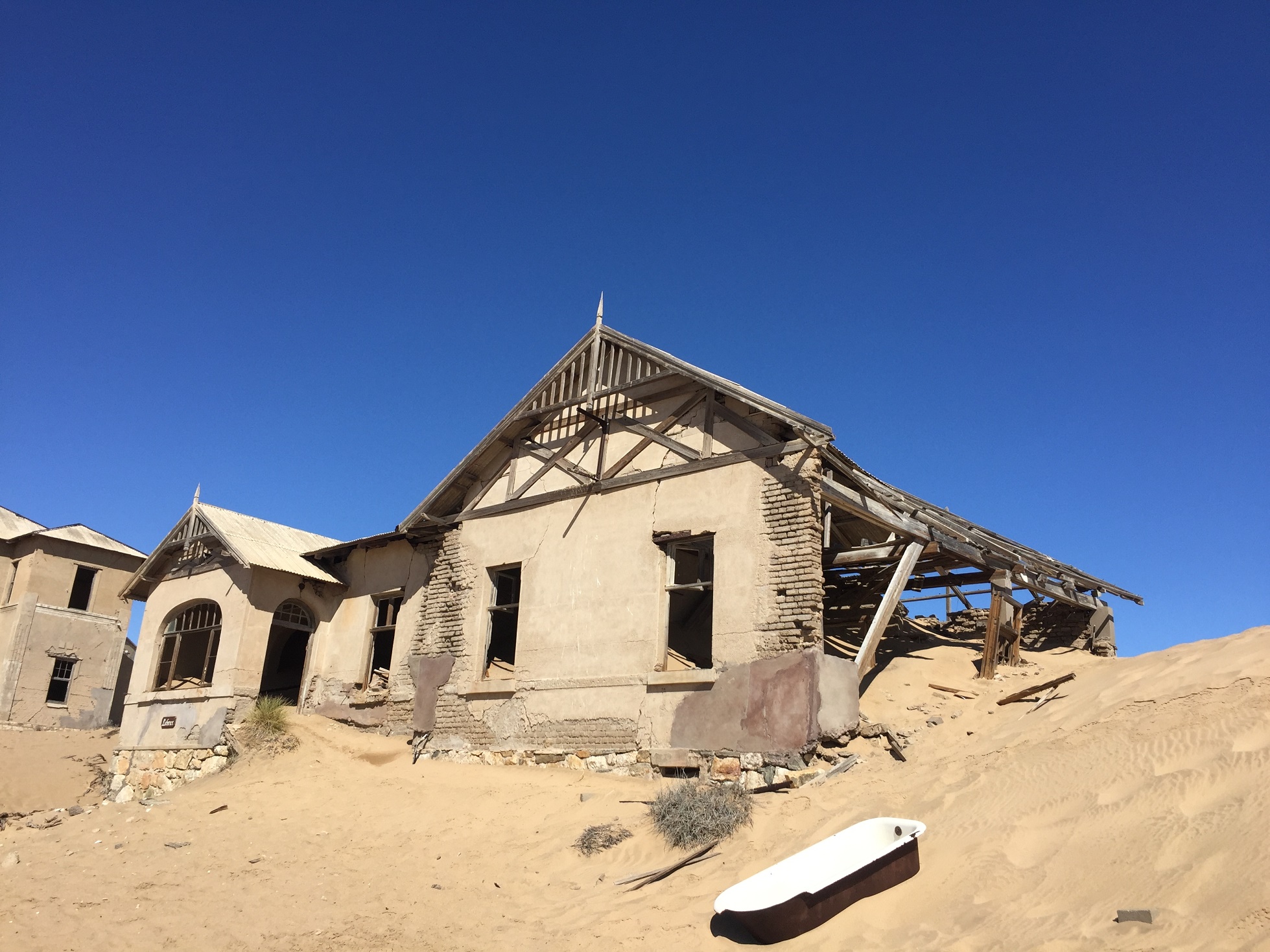
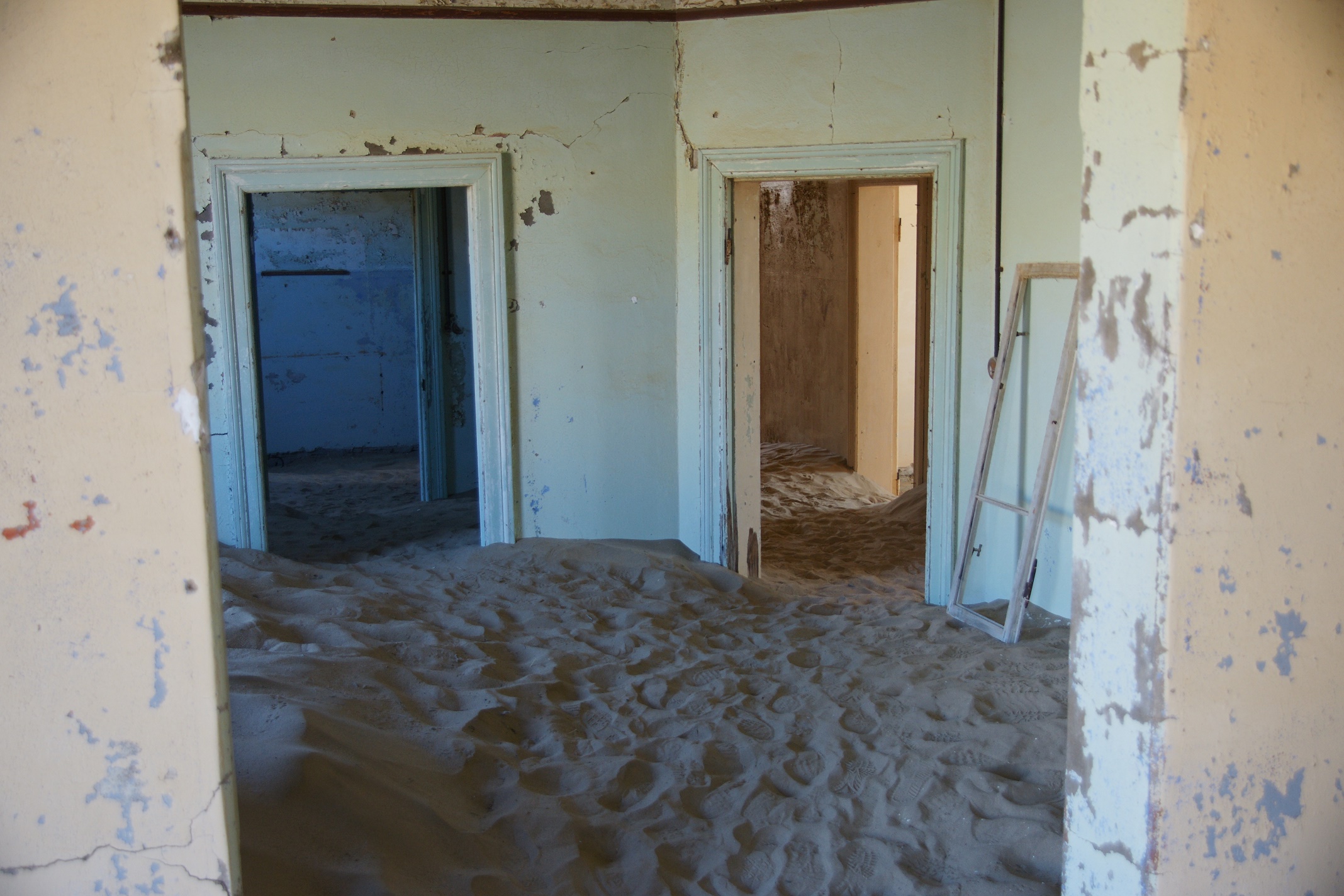
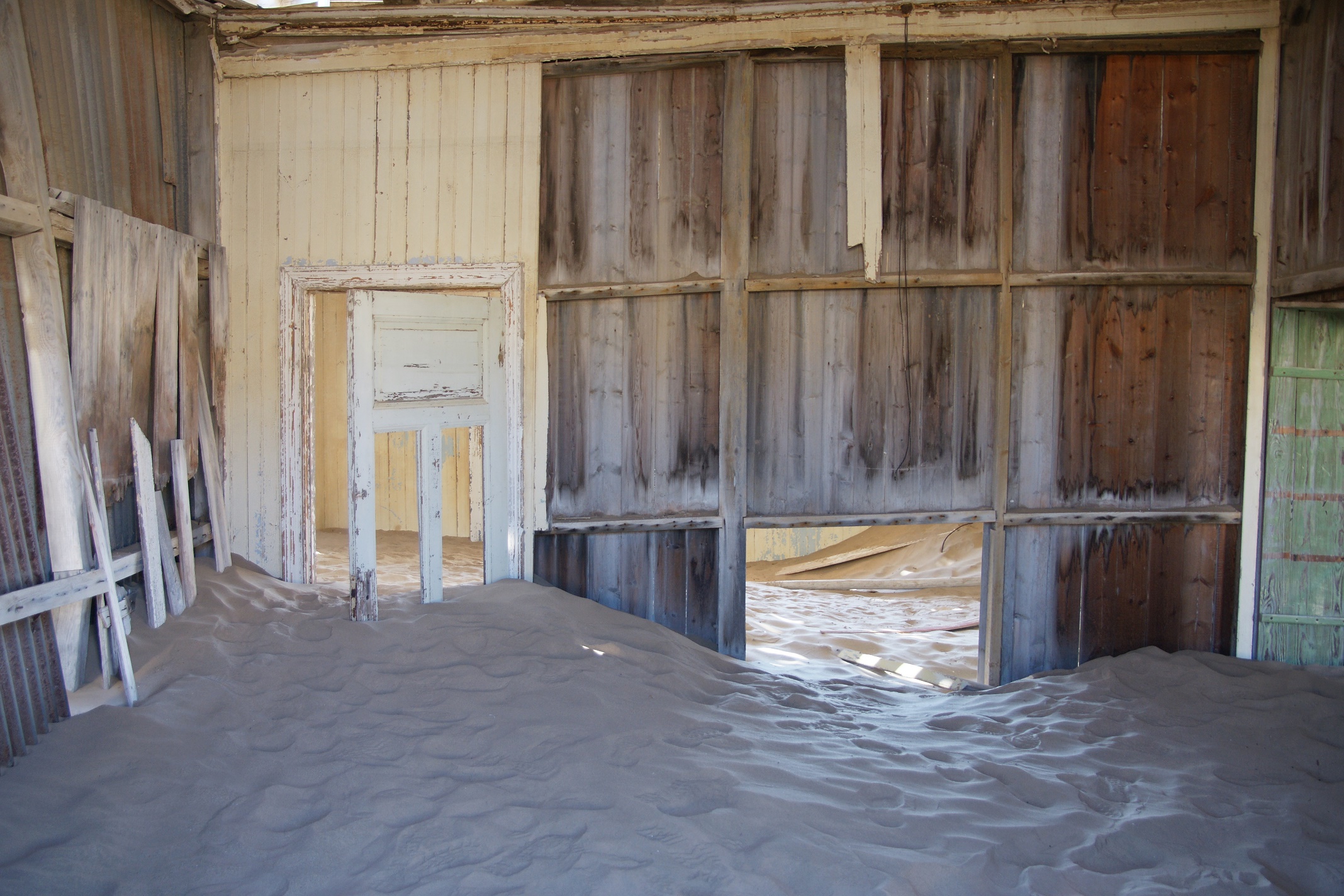
Today Kolmanskop is a popular tourist attraction adjacent to the Sperrgebiet (forbidden area) which has existed for one hundred years to keep casual fossickers out of the diamond fields.
Among the buildings of European architecture that remain today are grand stately homes, the hospital, casino and theatre — all ravaged by wind and the encroaching dunes that have left them feet deep in sand. Much has been done to preserve these buildings. Standing in those sand-filled houses, you can imagine the main road, Bismark Street, bustling with activity. The general manager, accountant and architect all had huge houses; the school principal’s house is only held together by the sand and the hospital looks haunted. The whole place was rather eerie and very cool. We stayed far too long and took way too many pictures.

The General Manager’s house was one of the biggest on ‘Millionaire’s Row’
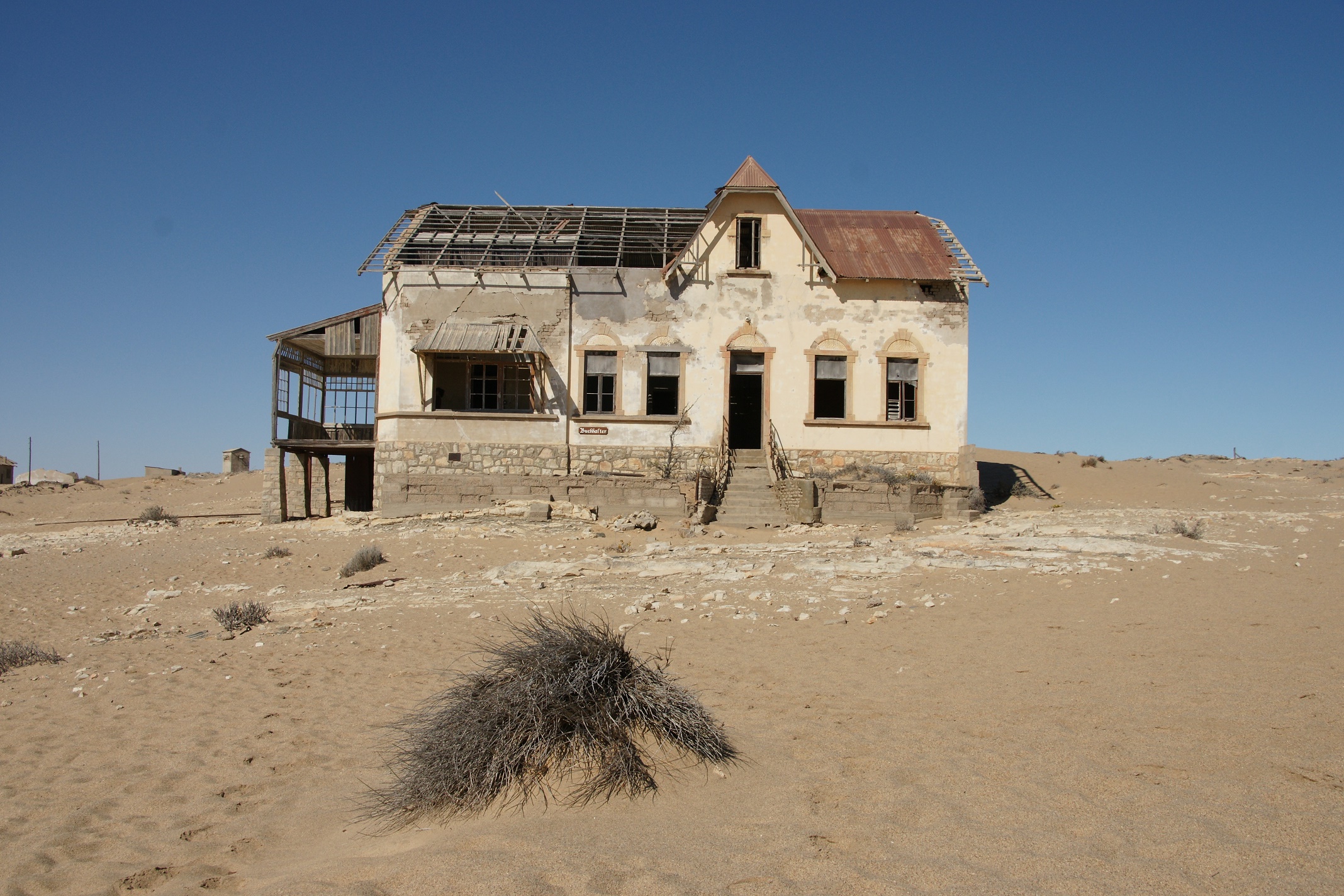
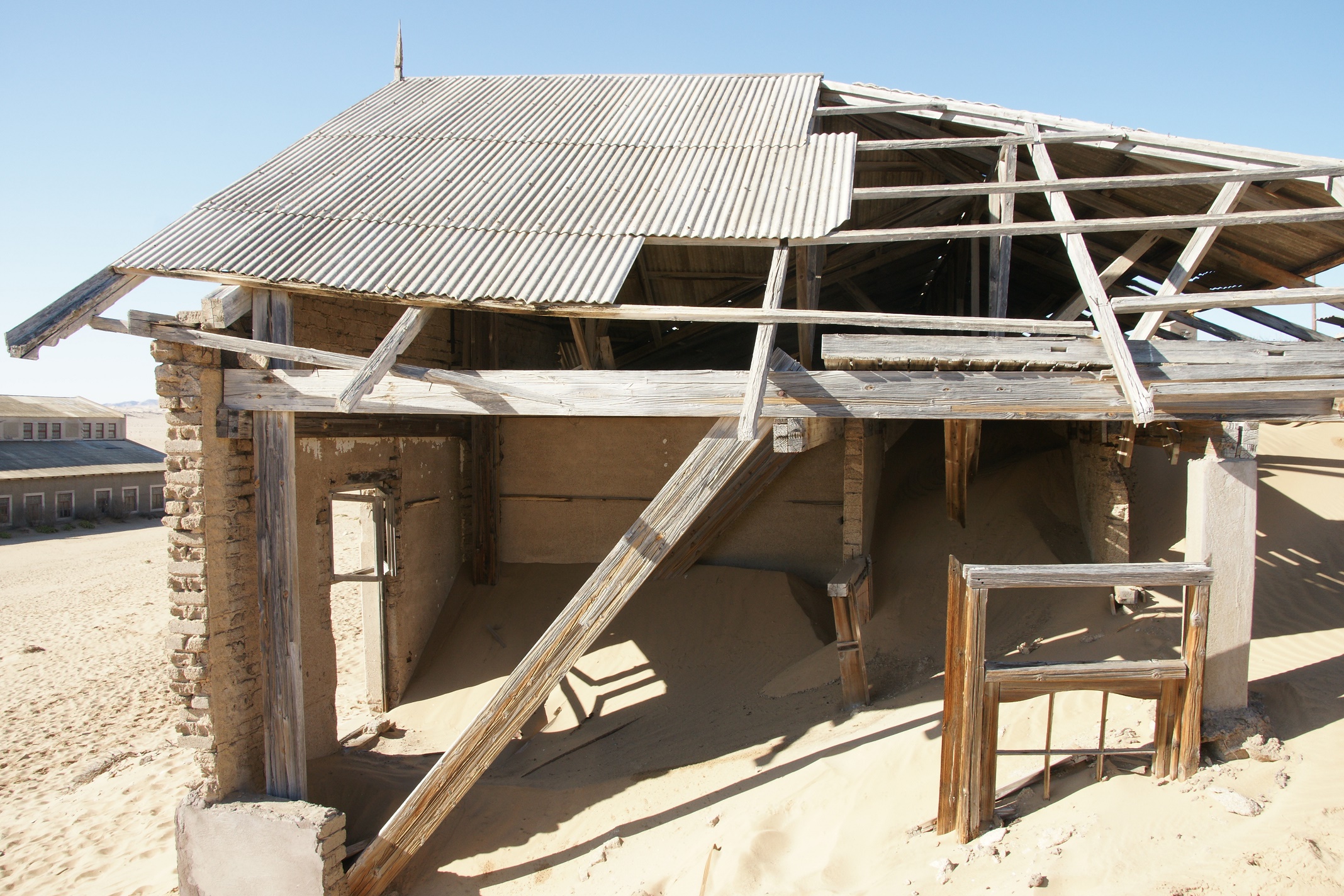
The principal’s is only held together by sand
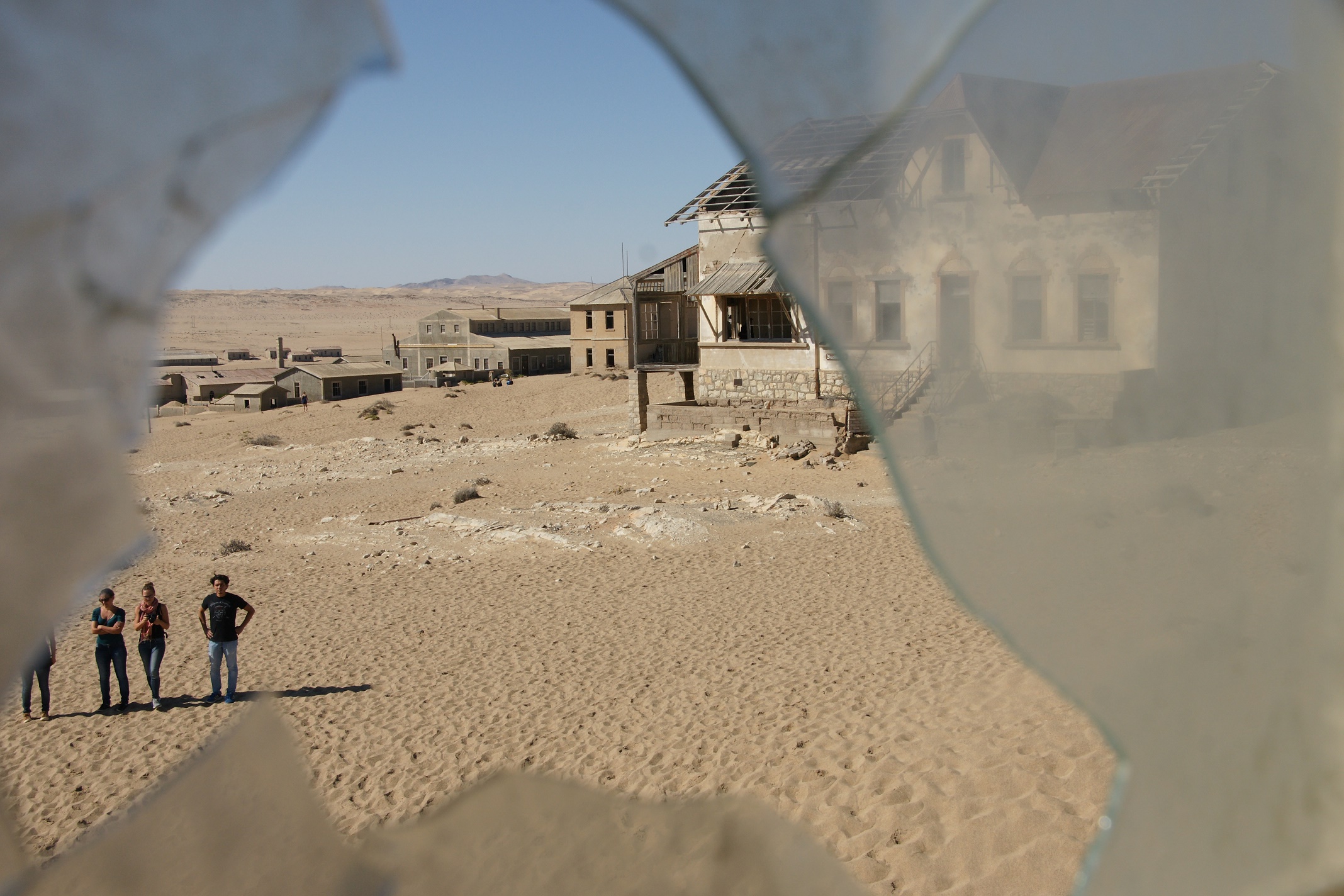

In Kolmanskop, diamonds were initially so plentiful that workers would lie on their stomachs and simply pick the diamonds out of the sand.
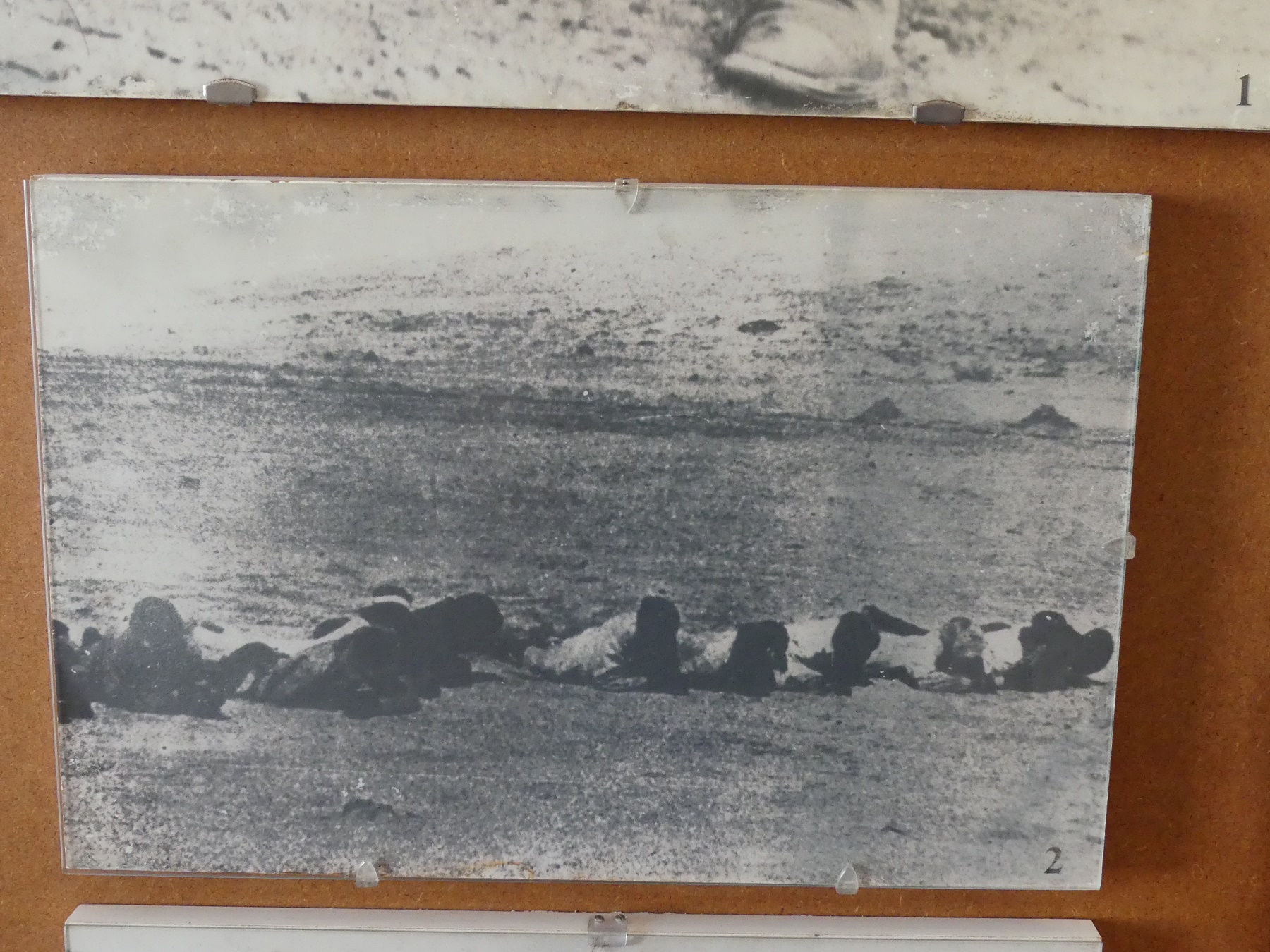
Workers lying on their stomachs, in search of diamonds
When it got too difficult to find diamonds on the surface, some 30 kilometres south of Kolmanskop a new site named Elizabeth Bay was opened. Here the diamond production was done at a large industrial scale in huge factory plants. Many waggon loads of diamond-bearing sand and gravel had to be brought in to the recovery facilities. The material was then screened and washed in huge drums, while the necessary water was pumped up from the sea. About 1000 carats, that is around 200 grams, of raw diamonds were extracted daily.
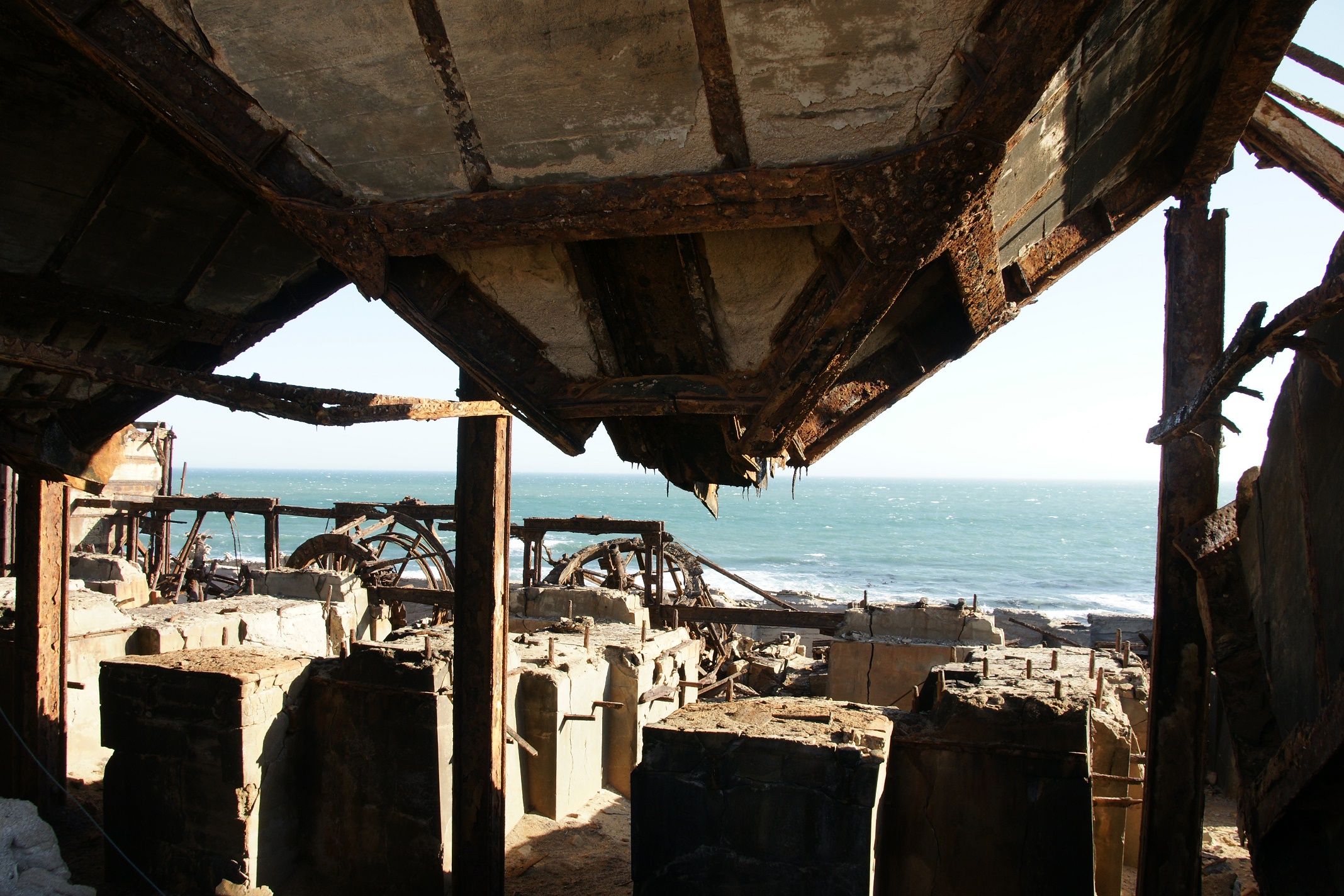
The old mine at Elizabeth Bay, now in ruins
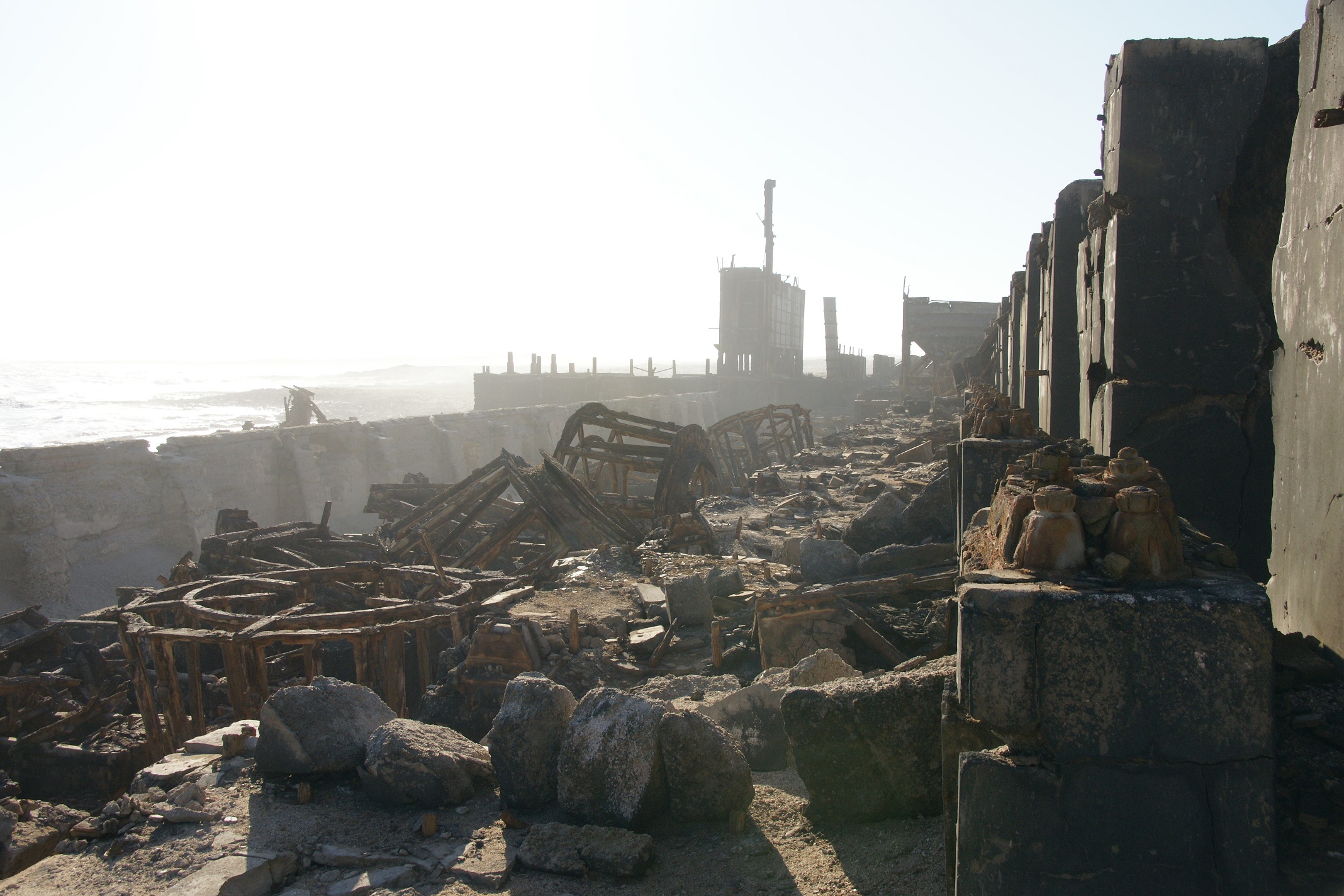
Built in 1926, Elizabeth Bay quickly grew and was eventually home to about 200 Germans and 1200 contract workers. A mere nine years later, just after the Second World War, most of the population moved onto bigger mining opportunities and left the town behind. Through the years, a combination of winds, salt-laden mists and chemical weathering have turned the once busy settlement into a skeleton and today it is pretty much a ghost town.
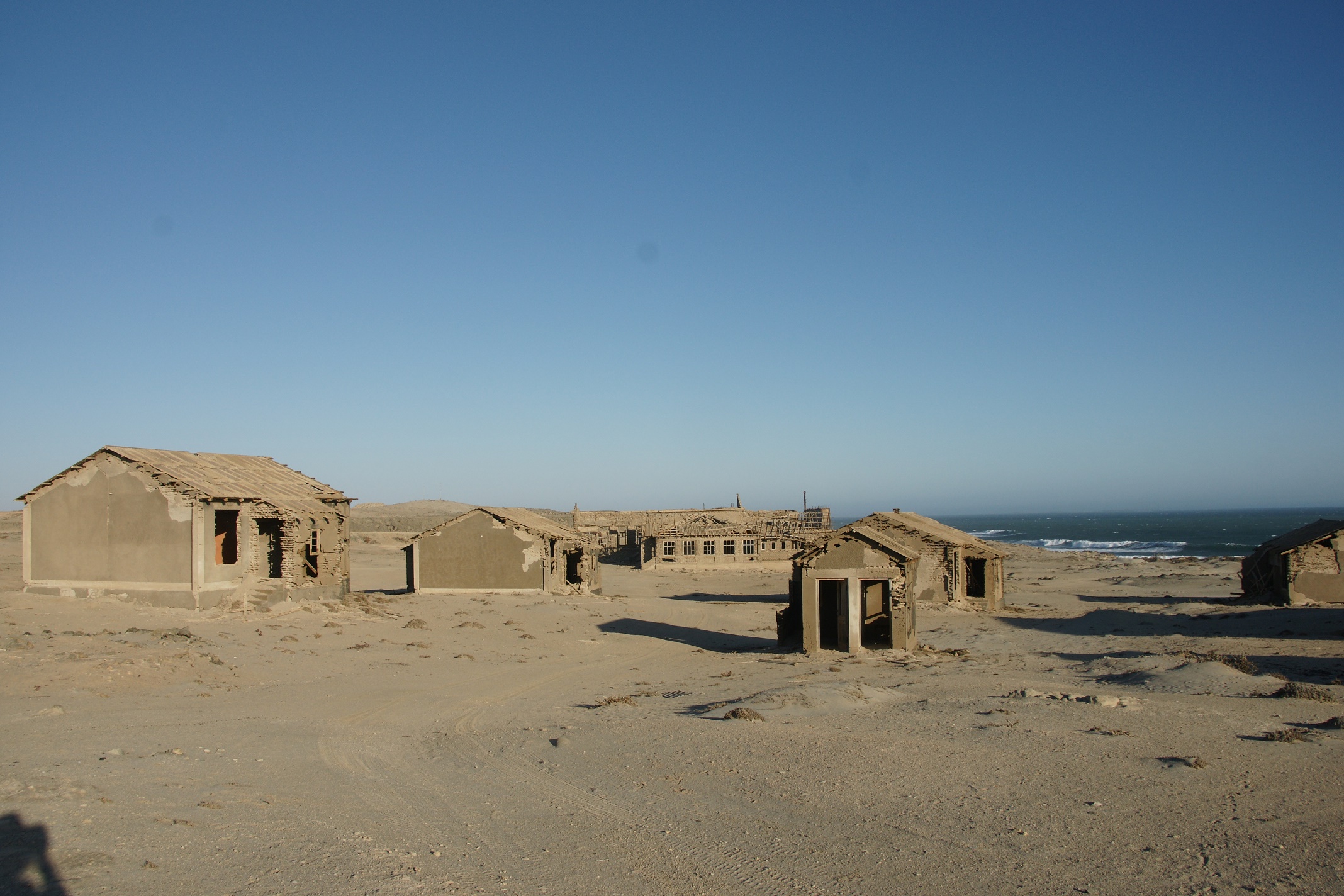
Elizabeth Bay is today no more than a ghost town
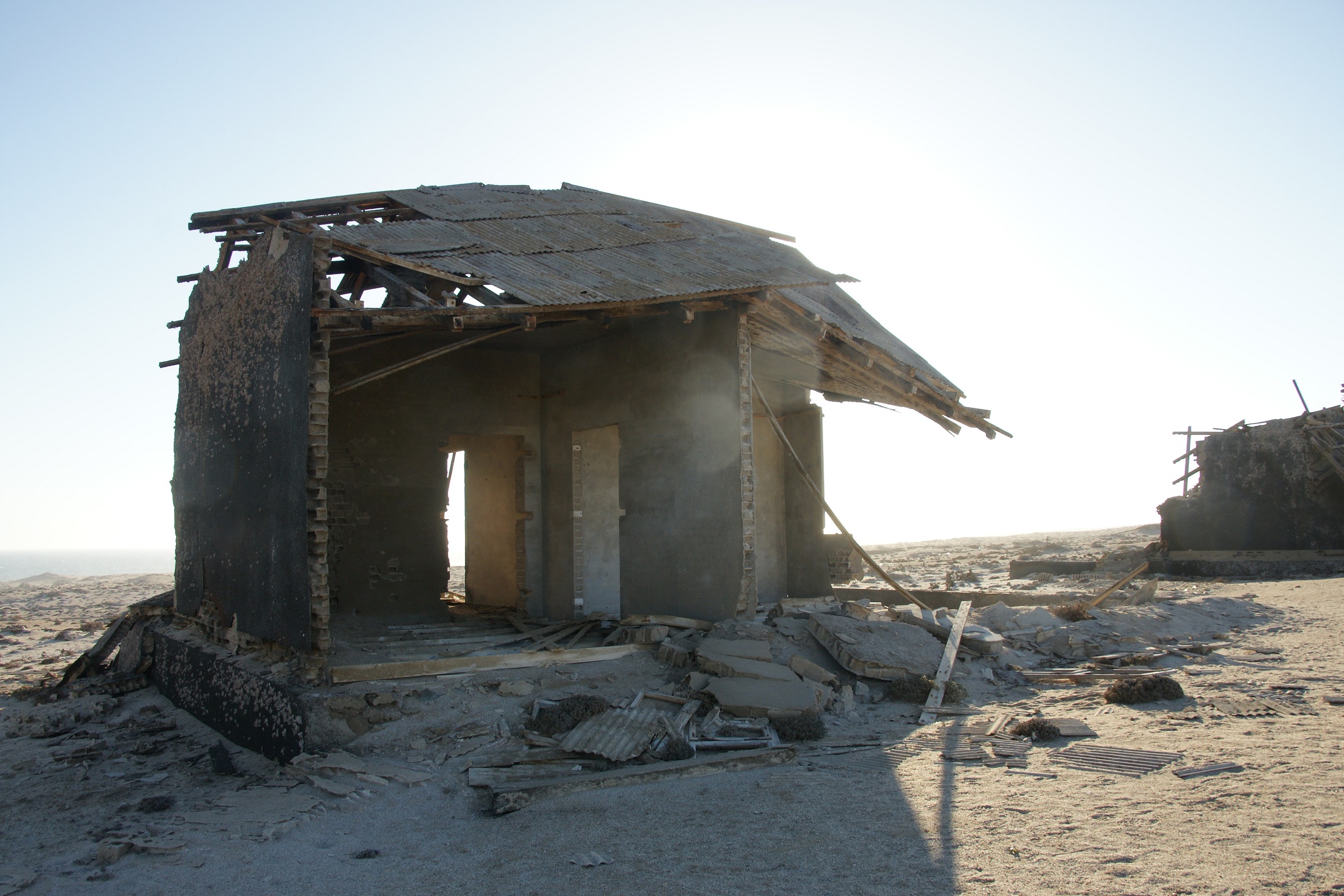
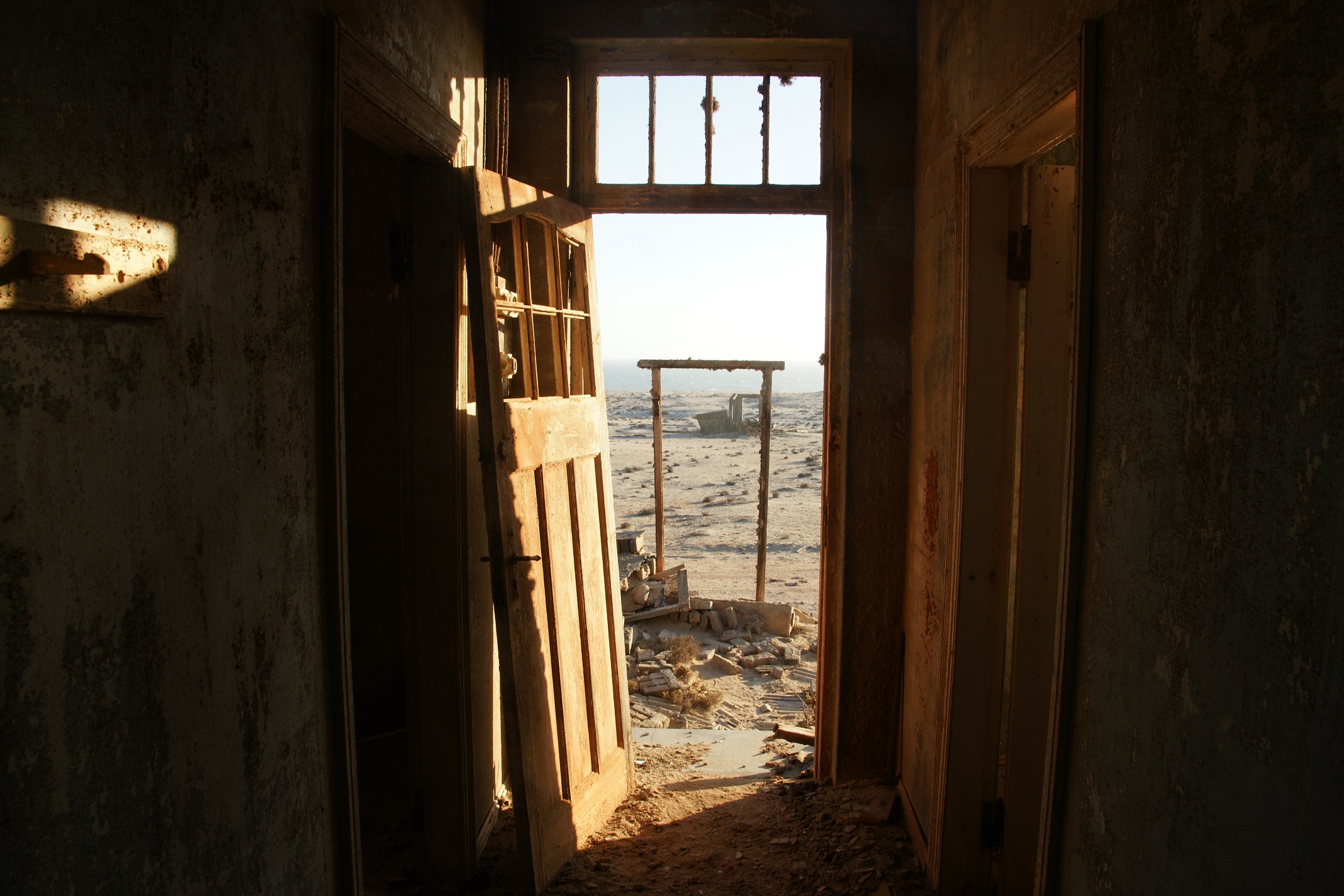
However, as diamonds are still being mined in the area, we had to get police clearance beforehand and even had a breathalizer test (because it is an active mine) before we could enter.
The drive there was about an hour and we spent about two hours walking around amongst the ruins. Some furniture, like beds and side tables, were still in some of the houses, although by now completely ruined by the elements. It was incredibly interesting but also quite strange and sad to see these beautiful, almost-new houses, go to ruin.
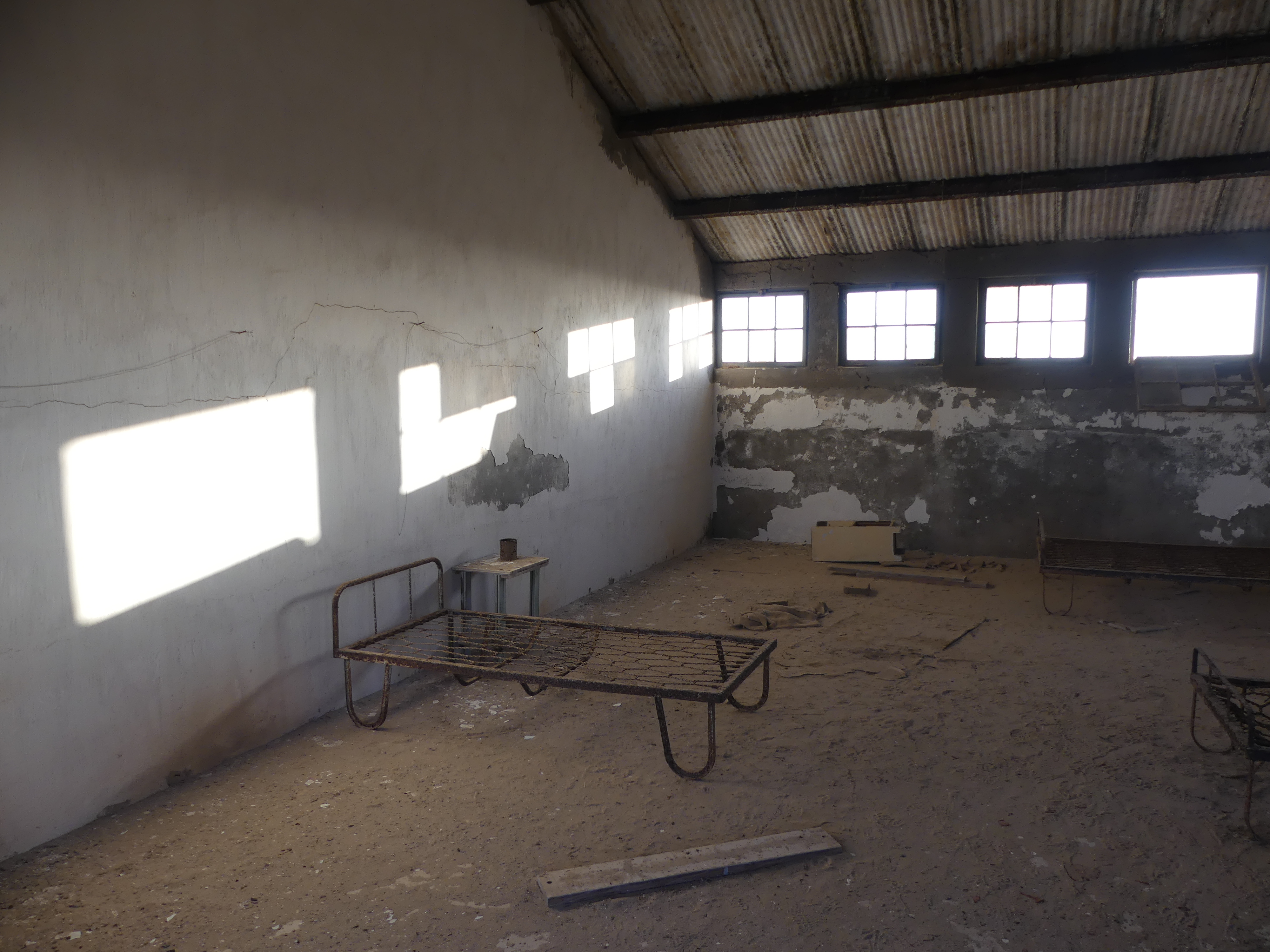
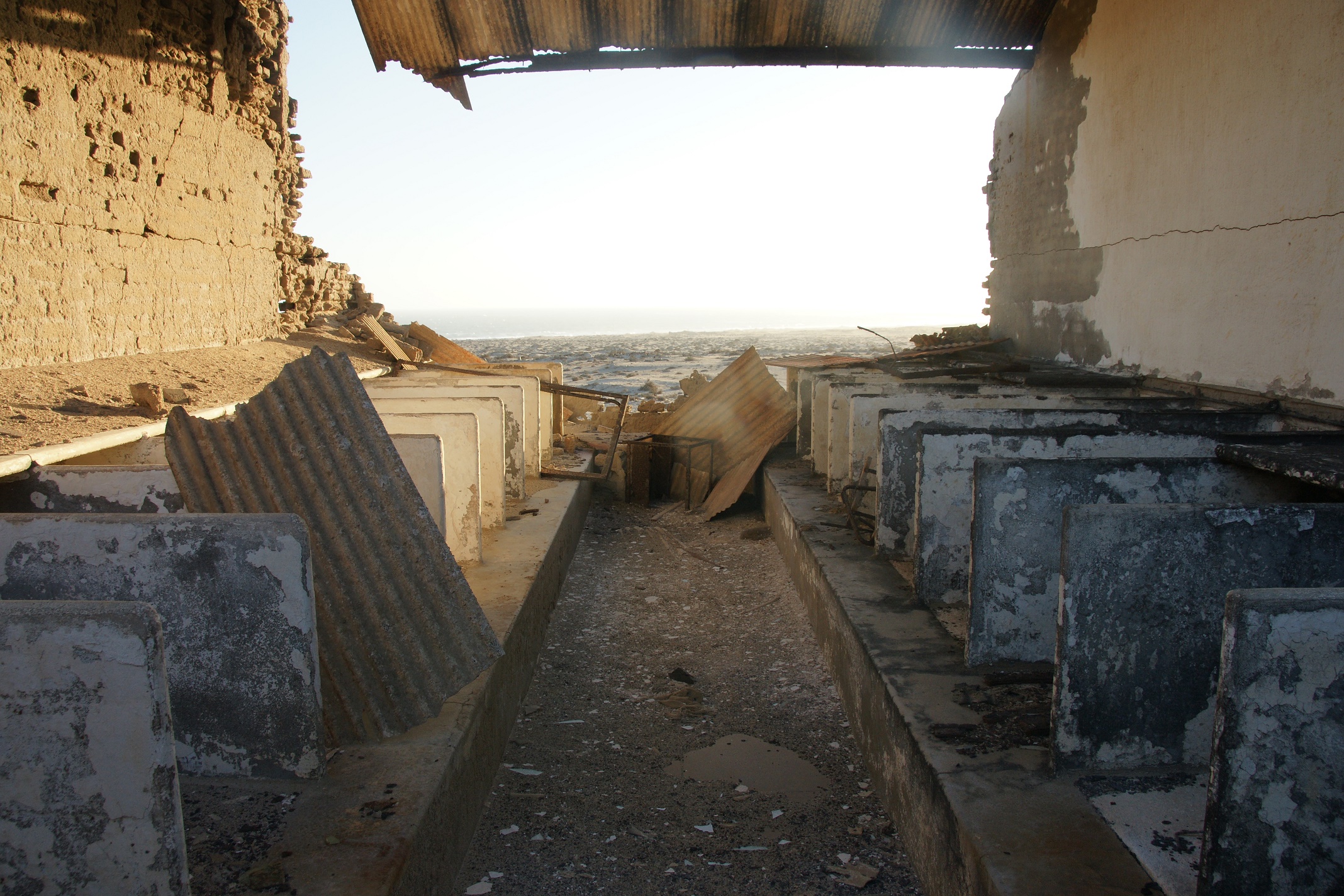
The workers’ beds were no more than small compartments with a low wall dividing them
